Discover Edible Wild Plants!
Let's get started learning about edible wild plants in North America. Here are some tools and insights to give you success and make your edible plant journey fulfilling!
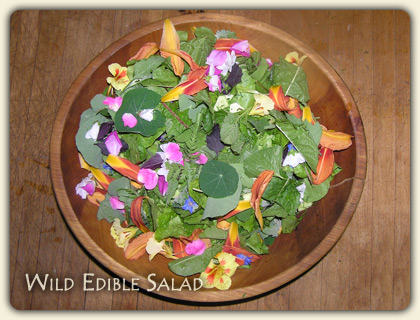
Benefits of Edible Wild Plants
One of the reasons so many people love wild edible plants is that they're free! As well, the nutrition content is higher in wild edible plants than store bought foods because they are wild and you're gathering them fresh and in season. Often store bought food is sitting on the shelves for a long time before you get to it and you don't get to see your food in its natural environment before buying and eating it. Depending on the plant, the tastes can often be more complex and more delicious. The qualities of wild edible plants also stimulate digestive juices that cause you to assimilate the food more easily.
Beyond the tangible benefits, the experience of wild edibles connects you to nature in a very powerful way. It asks you to slow down from the rushed pace of the modern world and step into timelessness. Developing relationships with wild edible plants brings great meaning to life, and brings health to the body, mind, heart and spirit. This indescribable feeling of deep connection to nature is one of the greatest things you can do for yourself.
Hazard – Poisonous Plants!
There are a very small percentage of plants that are deadly enough to kill you. If you learn the poisonous plants, it makes learning edibles easy, because you've already "weeded out" the poisonous ones.
So its best to learn these first. Besides, we don't want any nausea, vomiting or fatalities on our hands! I highly recommend you get your hands on Peterson's Field Guide to Venomous Animals and Poisonous Plants by Roger Caras and Steven Foster. This book will be your ally in identifying poisonous plants.
How to Identify Wild Edibles
Its important to learn plant identification before gathering and eating from the wild. There are many plant look-a-likes and you need to identify with 100% certainty the one you're looking for. You'll also discover its necessary to know which parts of the plants are actually edible.
Some of the best ways to practice identifying edible wild plants is to learn the plants in their various phases of growth. You can do this by having a study area you visit throughout the seasons. This will give you a chance to observe the plants in their different stages. From there, journal the plants and use field guides as a resource for learning.
As for using specific ways to identify edible wild plants, I recommend using Newcomb's Wildflower Guide by Lawrence Newcomb. This book has a simple key system that makes it very easy to identify plants.
Harvesting Wild Edible Plants – How, When and Ethics
It's important to have the proper outlook when gathering wild edibles. Being honorable, sensitive, appreciative and aware of the plants and animals that live and breathe through the landscape every day is an essential part of that perspective. When you gather from a plant, collect at most 5% of the plant stand where you are. That way the plant can reproduce and maintain it's integral role in the larger ecosystem.
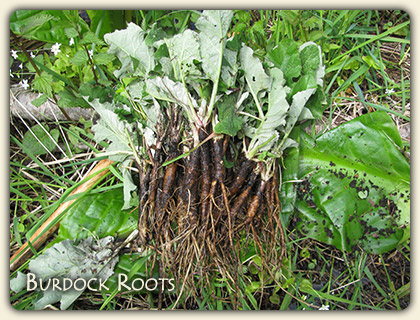
When you gather plants in their appropriate stages, you create a beneficial symbiotic relationship with you and the plant. You wouldn't want to gather the plant in the wrong phase of its life cycle because the plant is busy investing its life energy in its other parts. For example, you wouldn't want to harvest roots in the middle of the summer because all the energy in the plant is above ground.
The general rule of thumb for gathering edibles in season is:
- Gather leaves in spring and summer
- Gather roots in winter and for some, late fall and winter
- Gather fruits in late summer and fall
- Gather seeds after flowering in late summer and fall
When you gather, it's nice to have a container or basket, a tool for cutting the plants or a digging stick or shovel for gathering roots. The methods are different for gathering each plant and its parts simply because each plant is unique.
Over time, you'll learn how to become more sensitive to the plant and resourceful with your time and energy. For example, you can go out and harvest rose hips gingerly or you can gather huckleberries swiftly with practice. There are benefits in both approaches.
Processing Edible Wild Plants
So you've gathered some amazing and beautiful wild edible plants; now its time to process them. If the plant needs washing, depending on what kind of plant it is, rinse or soak the plant material in cool water. For drying your bounty, there are many ways of hanging, lying or drying such as using screens, paper bags, bundled bunches, or food dehydrators. Its mostly berries that get frozen although you can freeze leaves as well. Find some recipes to get started. We have a variety of recipe pages on our site that you can find below.
Tasting the Wild! Eating your Harvest
Are you getting hungry yet? I know I am! Lets talk about the eating part – one of my favorite aspects of edible wild plants. Some plants can be appreciated when you combine them with others and some plants are wonderfully savored on their own. Some are solely edible while others are also medicinal. Get to know the properties of the plant you will be working with.
Consider taking a moment to presence gratitude for your harvest. Feel the connection with the food you're eating and send your mind's eye back to the spot where it grew. Can you recall all the details of that special place? This powerful connection includes you in the system of giving and receiving, life and death.
It's time to cook it up! Some plants need cooking before eating and some don't. It's different for each plant so here's where research comes into the picture. Once you've got a body of experience with wild edible plants, try to practice foraging and browsing on wild edibles directly in the field, like the other animals do. Again, using recipes for cooking edible plants is a great way to learn and experiment!
33 Most Common Edible Wild Plants in North America
- Wild Onion (Allium bisceptrum)
- Common Burdock (Arctium minus)
- Common Milkweed (Asclepias syriaca)
- Common Dandelion (Taraxacum officinale)
- Lambsquarters (Chenopodium album)
- Brambles (Rubus sp.)
- Currants and Gooseberries (Ribes sp.)
- Blueberries and Cranberries (Vaccinium sp.)
- Sheep Sorrel (Rumex acetosella)
- Chickweed (Stellaria media)
- Red Clover (Trifolium pretense)
- Garlic Mustard (Alliaria petiolata)
- Miner’s lettuce (Claytonia perfoliata)
- Common Plantain (Plantago major)
- Stinging Nettle (Urtica dioica)
- Common Cattail (Typha latifolia)
- Wild Ginger (Asarum caudatum)
- Wild Strawberry (Fragaria virginiana)
- American Elderberry (Sambucus Canadensis)
- Wild Rose (Rosa sp.)
- Amaranth (Amaranthus retroflexus)
- Wild Garlic (Allium ursinum)
- Common Camas (Camassia quamash)
- Violets (Viola sp.)
- Wild Mint (Mentha arvensis)
- Common Salsify (Tragopogon porrifolius)
- Common Chicory (Cichorium intybus)
- Wild Sarsaparilla (Aralia nudicaulis)
- Western Dock (Rumex occidentalis)
- Cow Parsnip (Heracleum lanatum)
- Bull Thistle (Circium vulgare)
- Common Sunflower (Helianthus annuus)
- Jerusalem Artichoke (Helianthus tuberosus)
Preserving the Wisdom of the Edibles – Resources and more
Since there are many aspects to plant identification we recommend some basic field guides that serve as wonderful resources for identifying as many edible wild plants as your heart desires. Here are some books to get you started:
- Newcomb's Wildflower Guide by Lawrence Newcomb
- Reader's Digest Guide to North American Wildlife
- Peterson's Field Guide to Edible Wild Plants (for your region)
- From Earth to Herbalist by Gregory Tilford
Learning to identify edible wild plants takes you on a greater journey that includes noticing who the other animals are that eat them, identifying the bigger ecological web of relationships that are present when gathering wild edibles, learning how to read the weather and understanding how that affects their stages of growth and so much more. This is just the tip of the iceberg.
List of Articles on Edible Wild Plants
We invite you to check out our articles below as you continue to explore the world of edible wild plants and enjoy building deeper connections with the plants themselves. Enjoy!
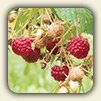
Edible Wild Berries
Discover Edible Wild Berries! Discover edible wild berries! Learn all about edible wild berries right here, including benefits, hazards, types of wild berries, berry identification, harvesting, processing, and more!

Elderberry Recipes
Amazing Elderberry Recipes! Discover a diverse collection of elderberry recipes that will boost your health and energy. Learn many marvelous ways to prepare this versatile berry!
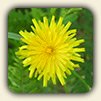
Dandelion Recipes
Delicious Dandelion Recipes! You'll find a variety of diverse, daring, dandy dandelion recipes right here! Don't miss our favorite dandelion recipe, Dandelion Sunrise!
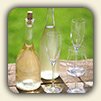
Dandelion Wine Recipe
Check out our favorite dandelion wine recipe! Dandelion wine making is an amazing process that turns a prolific wild plant into a true elixir. We'll show you exactly how to make dandelion wine here!

Herbal Tea Recipes
Herbal Tea Recipes - Drinking for optimal health! Create beautiful gifts, save money, connect with nature, and keep yourself, friends, and family healthy and well with these herbal tea recipes!

Herbal Tea Benefits
Herbal Tea Benefits - Welcome to the herbal apothecary where herbal tea benefits abound. Learn all about how herbal teas promote health and wellness right here.

Peppermint Tea Benefits
Peppermint Tea Benefits - Bring renewed energy to your health and boost your immune system with all the nutrition and medicine that peppermint tea benefits have to offer.

Mullein Tea
Mullein Tea - The surprisingly simple wild plant medicine for many common illnesses - mullein tea. This hardy and robust remedy has a lot to offer and it's simple to make.
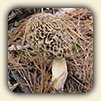
Edible Wild Mushrooms
Encounter Edible Wild Mushrooms. Everything you need to learn about foraging for wild edible mushrooms - benefits, hazards, identification techniques, harvest approaches, processing tips, and more.
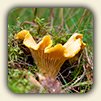
Identifying Wild Mushrooms
Identifying Wild Mushrooms. Learn how to identify edible mushrooms, benefits of befriending wild mushrooms, get resources for edible mushroom identification, and more.
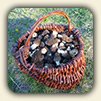
Morel Mushroom Hunting
Discover Morel Mushroom Hunting. Everything you need to know about morel mushroom hunting. Hunting morels is one of our favorite spring rituals. It can be very tricky to get started, hence we offer these morel mushroom hunting tips!
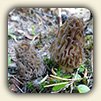
Morel Recipes
Finest Morel Recipes. Here we offer the very best morel mushroom recipes. These wild edible mushrooms are a true delicacy, and cooking morel mushrooms is a true art form. Discover my personal favorite morel recipes here.
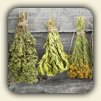
How to Dry Herbs
Learning How to Dry Herbs. Want to know how to dry herbs? We'll give you the best time-honored methods of how to dry fresh herbs here, and preserve their essence in the process.
Hazard Articles:
While you are out and about harvesting edible wild plants, keep an eye out for these potential hazards:

Poison Ivy Plant
The Mighty Poison Ivy Plant! Dispel the myths and learn the poison ivy facts. Discover how to identify poison ivy, learn safe prevention, and feel safe and confident to go into the woods anytime!

Poison Ivy Treatment
Powerful Poison Ivy Treatment Are you looking for potent and effective poison ivy treatment? Discover the best natural options for poison ivy cure plus strong and effective conventional choices for poison ivy remedy!

Bee Sting Treatment
Natural Bee Sting Treatment Discover the number one bee sting remedy that is literally growing in most people's front lawns! These natural bee sting remedies are proven effective as bee sting treatment and more.

Wasp Sting Treatment
Wasp stings are a real hazard, and worth some research. This article details types of wasps, as well as wasp sting treatment, natural remedies, causes, prevention, symptoms and more.
Interested in being personally mentored in Edible Wild Plants, on a transformational journey of connection to nature, community, and self?
Check out the Twin Eagles Wilderness Immersion Program.
comments powered by Disqus
Return from Edible Wild Plants to Wilderness Survival (homepage)
Track Us